Regulatory Uncertainty and Investment in Wireless R&D
On the question of why wealth is not creating new jobs, Ryan stated the causes were
(U)ncertainty on taxes, uncertainty on regulation, uncertainty on debt, and therefore borrowing costs, interest rates and things like that. there is so much government induced uncertainty that it is putting a massive chilling effect on growth. I think that is something we can fix. That is something we can be focusing on as public policy leaders to fix one of the sources of instability, of uncertainty, of one of the depressors of economic growth. (0:50 - 1:26)
Businesses need to have to have some degree of certainty if they are going to plan and take a risk. We want to encourage risk taking. We want to encourage people to take their capital and put it to work, not put it in a bank, not put it in a bond, put it in a factory, put it in a business plan that increases employment. (1:50 - 2:10)
Similarly, the FCC’s longstanding de facto policy of indecision and delay on deliberations on new spectrum policy or whether new technology would cause ”harmful interference” on incumbent licensees results in huge regulatory uncertainty for capital formation in innovative wireless technology. Coupled to this is the Commission’s continual denial that Section 7 is part of the “law of the land”, a repeated topic on this blog. (Section 7 is not a perfect piece of legislation. But if the Commission feels it is unworkable as written, the proper procedure is to request repeal or modification -- not ignore it.)
Wireless R&D is not the only thing a tech savvy investor can invest in. There are less regulated fields like semiconductors, display technology, energy technology, and even biotech - many investors would prefer FDA-regulated technology over FCC-regulated wireless technology because FDA despite its many problems is more transparent that FCC Title III technical regulation! FCC uncertainty and delay adds to other investment risks and may make wireless technology R&D too risky for any rational investor.
While this discussion focuses on technological innovators and incumbents are sitting “fat and happy” with their ability to delay and tilt FCC new technology deliberations in their favor, they also face a risk that capital markets might someday realize that the huge value of their Title III licenses depends on the “metes and bounds” of these assets and in the present nontransparent system this raises regulatory uncertainty for the incumbents and hence increase investment risk. Increased transparency may be more credible to investors than K Street law firms on retainer to defend against innovators.
Spectrum Wars Heat Up
Although I agree with much of what is said in the Infographic, this is the most complex piece of graphic design I have ever seen at FCC and may be the triumph of form over substance. It appears to have been contracted for with an outside design house, Lab42, which states on its website:
Behind every great infographic is great data, which is where Lab42 excels. The infographics we create are powered by the data collected from our very own market research studies, meaning each of our infographics is unique. If you choose to work with Lab42, you can be sure that your one-of-a-kind infographic will be customized to meet your needs and the data behind it will be exclusively yours.
The Infographic starts with this statement:
It then goes on to say:S P E C T R U M is the public airwaves, which Americans use every day. Without spectrum, you can’t make cell phone calls, download digital textbooks, email on your smartphone, download an app to your tablet, use a remote control, or listen to the radio?
Without additional spectrum EXPECT DELAYS more dropped calls & slower download
Under “What does spectrum matter” it states that there will be 771,000 jobs created by 2015, crediting a “study by Deloitte” that is not cited further either on the Infographic or the accompanying PN, so we can’t see what the assumptions were.
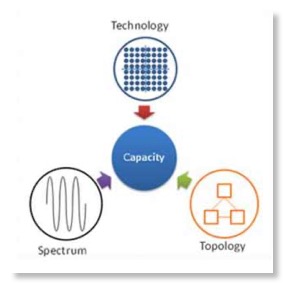
What the digital economy needs is not spectrum but capacity furnished in a cost-effective manner. Now new spectrum for the CMRS crowd may well be part of the solution, but it is not necessarily the whole solution. The above chart points out that spectrum, technology, and topology (infrastructure) are all contributors to capacity. The CMRS crowd has a single minded focus on the spectrum issue and the new Infographic seems to have the FCC following hook line and sinker. The FCC’s apparent indifference to wireless innovation, as shown by the 4+ years it fussed with AWS-3 without even reaching a conclusion on the technical issues and its inaction on its own Wireless Innovation NOI will probably guarantee that capital formation for such wireless innovation in this country will dry up so the CMRS crowd can focus on equipment designed in Europe and manufactured in China.
The Coalition For Free TV and Broadband is “a group of television broadcasters, concerned organizations, and individual citizens and has formed to ensure the survival of free television and to offer solutions to the nation for better, cheaper wireless broadband utilizing the broadcast industry.” Although Sinclair Broadcasting does not appear to be a member of this group, its executives are clearly speaking in favor of it. In the past Sinclair has been critical of the ATSC VSB technology for DTV and favored the European-like OFDM alternative.
White details of the Coalition proposal are somewhat vague, they describe it as follows:
With regulatory changes that would be trivial to implement, broadcasters could deliver a substantial and perpetual revenue stream to help offset budget deficits while alleviating the most significant cause of mobile broadband congestion. The driving factor of the looming spectrum crisis is the rapid growth in use of mobile video services. Projections of a spectrum shortage assume that all mobile video will be provided on a “point-to-point” basis: more than half of all mobile data traffic is expected to be video services. Today, if 100,000 people watch a football game, wireless carriers must provide 100,000 separate streams. The same game provided by a broadcast architecture would require only one stream – every user can access the same stream. The spectrum efficiency gains of broadcast for video delivery, as compared to individual streams on wireless networks, are vast.
If broadcasters are permitted to enhance their technology to seamlessly integrate with mobile devices, vast amounts of mobile data demand can be offloaded from the wireless networks. And the revenue generated from ancillary data services can generate far greater receipts to the Treasury than a one-time auction.
Of course, the claimed efficiency depends critically on whether people want to use their cell phones to watch real time programming simultaneously or want to watch video on demand. The Coalition proposal has some similarity to the late Qualcomm MediaFLO system that was a commercial failure.
The Coalition gives the following advantages for their plan:
I can not find a public statement by CTIA on this plan although Broadcasting & Cable found an NAB quote merely saying ”it is studying the Coalition proposal, which offers interesting ideas worth reviewing.”If embraced by Congress and the FCC, the Coalition Plan would:
•Avert a spectrum shortage by providing a vastly more efficient way to deliver the bandwidth-intensive broadband traffic
•Lead to lower prices for mobile broadband data while improving service quality
•Eliminate the need for incentive auctions, protecting Americans who rely on full power and low power broadcast television from loss of service.
•Provide more than $60 billion in new revenue to the U.S. Treasury in the first fifteen years, far more than the projected net proceeds from incentive auctions.
•Provide a perpetual revenue stream that could be worth as much as $216 billion to the U.S. Treasury.
UPDATE
A Tweet from CTIA announces “Study confirms spectrum crunch for wireless” and points to this report from the Global Information Industry Center at the University of California, San Diego. But in in line with the Ofcom report on the 3 building blocks of wireless capacity, the cited report also points out:
Enable deployment of supporting infrastructure.
Mobile services require towers and other support structures for antennas, lines and microwave dishes to “backhaul” the traffic from the cell site to the central network and switches, power, and secure locations for the equipment. Installing these facilities requires permits, construction and community support. The more we consume wireless data, the higher the number of cell sites will be needed to increase the capacity and improve reliability. If we want to continue to have access to reliable wireless services, we must be willing to support this construction. This needs to be an explicit choice made by the community.
Headline: NAB and CTIA Agree on Something!
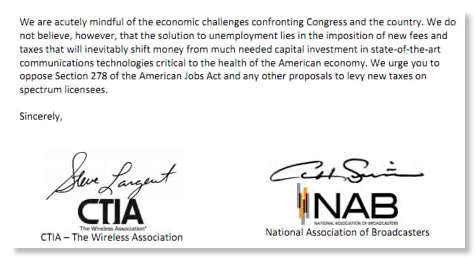
An e-mail from NAB arrived today with the letter which ends as shown above. My first thought: Wow! NAB and CTIA actually agree on something! After feuding all year on the silly issue of FM receivers in cell phones as a way to settle an NAB/RIAA squabble, not to mention the incentive auction legislation, they are finally in agreement and both million dollar CEOs signed the same document!
Readers may recall that I introduced the spectrum provisions of the Obama Jobs Bill last month. Although incentive auctions got all the attention, there are a number of other provisions. The White House summary I cited, has the following description of the Section 278 that the Goliath’s fear so much:
“Subparagraph (A) requires the FCC to conduct a rulemaking to establish a fee methodology and a fee collection schedule. The FCC is directed to develop a fee methodology consistent with the public interest, convenience, and necessity requirement, which is found throughout the Communications Act. The FCC is expected to undertake a multi-stage rulemaking during which fees for different classes of spectrum licenses or construction permits may be developed and phased-in over time, consistent with sound spectrum management principles. It is expected that fees would encourage efficient allocation and use of the radio spectrum, as the opportunity cost of spectrum resources would be reflected to commercial license holders that did not receive authorizations through competitive bidding...Subparagraph (E) provides an exemption from spectrum licensing fees for holders of licenses for broadcast television and public safety radio services.”
So what NAB and CTIA both agree upon, with SIA, NRB, and PCIA, is they don’t want to pay more fees for their spectrum that wasn’t obtained by auction. Presumably this is the same CTIA that was opposed to M2Z getting a license without auction but with a major free service requirement.
But, I guess nobody likes to pay more taxes!
FCC Starts Jammer Enforcement on a Large Scale
Readers may recall that enforcement has been a recurring theme here and your blogger has criticized both the Commission for its disinterest and major trade associations that have myopically made this a low priority issue in their interactions with FCC.
The PN stated,
The FCC Enforcement Bureau has issued 20 enforcement actions against online retailers in 12 states for illegally marketing more than 200 uniquely-described models of cell phone jammers, GPS jammers, Wi-Fi jammers, and similar signal jamming devices. These devices have the capacity to prevent, block, or otherwise interfere with authorized radio communications in violation of section 302(b) of the Communications Act and sections 2.803 and 15.201(b) of the Commission’s rules.
The Enforcement Bureau’s actions are intended to warn retailers and potential purchasers that marketing, selling, or using signal jamming devices in the U.S. is illegal and that the FCC will vigorously prosecute these violations.
Enforcement Bureau Chief Michele Ellison said, “Our actions should send a strong message to retailers of signal jamming devices that we will not tolerate continued violations of federal law. Jamming devices pose significant risks to public safety and can have unintended and sometimes dangerous consequences for consumers and first responders.”
Unfortunately EB included in the Citation text that clearly would have gotten a staffer into trouble during my nearly 25 year tenure at FCC: it prejudged the commissioners on something they had never ruled on. Para. 9 of the Citation states
Signal jammers, however, cannot be certified or authorized because their primary purpose is to block or interfere with authorized radio communications. As noted above, a device intended for such use is clearly prohibited by section 333 of the Communications Act. Thus, signal jammers such as those offered by each of the Online Vendors identified in Appendix A cannot comply with the FCC’s technical standards and therefore cannot be marketed lawfully in the United States or its territories.
First, “ a device intended for such use is clearly prohibited by section 333 of the Communications Act” is clearly not the meaning of Section 333 which deals with jamming, not jamming equipment. Section 302(b) gives the Commission to ban equipment that does not complies with its regulations for transmitters and the lack, at present, of any such regulations for jammers is thus illegal. Isn’t that clearer than misconstructing Section 333? I believe that anyone with a legal background will see that the references to Section 333 in the Citation adds nothing to this marketing case and is only posturing unsupported by any citations to regulation or precedent.
In its new found jammer marketing enforcement enthusiasm, EB also updated its FAQ on GPS, Wi-Fi, and Cell Phone Jammers. Unfortunately, in doing so it pandered excessively to CTIA lobbying and ignored the lack of any en banc Commission precedent on its interpretation of Section 333. The new FAQ, gives the text of Section 333 and then states “Jammers cannot be marketed or operated in the United States except in the very limited context of authorized, official use by the federal government.” This, at best, fuzzifies whether the Commission has the legal jurisdiction to authorize jammers in some contexts for nonfederal users and fully agrees with CTIA petition of November 2, 2007 that the Commission has never even asked for public comment on (with the exception of the section on bidirectional amplifiers that is being considered in Docket 10-4).
This highlights the inability or unwillingness of the Commission to take any action on the CTIA petition or to take any action on contrary points of view in the July/August 2009 petition of the South Carolina Department of Corrections and 30 other states to allow jamming in prisons to control illicit cellphone use and the 7/20/11 GTL petition that deals with both jamming and “managed access”. Both of the latter petitions contain legal arguments addressing why Section 333 does not limit the Commission’s jurisdiction in this area. So if this were so clearcut, FCC would have dismissed the CTIA petition as moot and the other petitions as being beyonds its jurisdiction. However, the 8th Floor remains silent on this public safety issue apparently for fear of offending CTIA.
So kudos to EB for the enforcement action it has initiated at last and a minor criticism for its pandering to CTIA on the FAQ. Let’s hope that EB follows through on this enforcement action by working with DOJ to seize inventory and assets of the perpetrators, not just asking them to reply and giving them opportunity to restructure. EB’s predecessor, the former Field Operations Bureau used to take such aggressive action from time to time. A few veterans of that era still work in EB, maybe they should be consulted on more assertive options for these devices that endanger public safety.
But at the risk of sounding like a broken record, isn’t it time for FCC to address the several petitions it has on prison jamming where the intention is to protect the public safety and resolve both the jurisdictional issue Section 333 and the technical issue of whether the benefit of prison jamming outweighs whatever interference risk it determines results from it?
UPDATE (11/13/11)
As your blogger expected, the EB action above did not get immediate compliance. Today, at least one of the cited firms, Espow International, Ltd of Jersey City, NJ (http://www.espow.com/) was still selling the very models cited!
Those of us with experience in the former FOB know that this type of citation is not reliable in achieving compliance for people profiting from such obviously illegal equipment. FOB used to get court orders to seize inventories of personal computers that did not have proper FCC equipment authorization and that posed much less of a public safety threat than the unauthorized jammers involved here.
The equipment importing and marketing sectors know full well that for the past decade or so FCC has shown little interest in marketing enforcement and bolder action is needed to overcome a decade of inaction. Generally, such enforcement at FCC has no constituency and projects without strong outside supporter tend to get few resources at FCC. The major trade groups will have to unite and praise FCC for these first steps but urge more assertive action to start a real cleanup.

Steve Jobs 1955-2011:
His Personal Role in the First Consumer Marketing of the Now Ubiquitous Wi-Fi

[Text of 2005 Stanford Commencement Address]
The impact of the iPhone on the wireless industry is well known. The role of Steve Jobs and Apple in the mass introduction of Wi-Fi is less well known. Here is a quote by Cees Links, of NCR’s Utrecht laboratory that pioneered Wi-Fi technology, from the book The Innovation Journey of Wi-Fi: The Road to Global Success:
The meeting in the Apple Boardroom was an interesting one. Lucent brought some of the most Senior Managers to the meeting, including John Dickson, the Head of the Semiconductor Division, as had Apple. Cordialities were exchanged, business cards handed out, etc. The meeting started at 2:00 PM, the companies at either side of the table, Lucent representatives with suits and ties, the Apple delegation was showing up Californian style. But, no Steve Jobs, the atmosphere became somewhat awkward: Steve had been delayed. Then Steve walks in, Californian style too, walks over to the Lucent side and shakes hands with everyone, needing no introduction. Steve starts talking, wireless LANs are the greatest thing on earth, this is what Apple wants, for about ten minutes straight. I believe Rich tried a few comments, no traction.
Then Steve asks: “Are there any questions?” I tried to show a few slides: key wins, market positioning, product offering, value creation, etc. Presenting slides with Steve Jobs is actually quite easy: you put up the slide, and he will do the talking, not necessarily related to the slide. Then he asks for the next slide. Rich McGinn is chiming in a few words, he thinks 1999 will be the big year for DSL: “Will Apple be ready?” That is: “Will Apple PCs have DSL?” Steve Jobs: “Probably not next year, maybe the year after, depends on whether there is one standard worldwide...” Turning the conversation back to wireless LANs: “We need the radio card for $50, and I want to sell at $99.” Then Steve apologizes, he has to leave – stands up, says “Hi!” and goes. The room falls silent.”
Vic Hayes recently pointed out to me that this price was one third of the 1999 market price whereas the data transfer rate was 5 times higher.
UPDATE
Cees Links expanded on this account in a recent blog post for EE Times. Here’s a part:
.That electrifying meeting was the start of a successful joint Apple/Lucent effort that resulted in the launch of the Apple i-Book with wireless LAN and the Airport base station. The key challenges were redesign, integration and working with all suppliers to drive down the cost. Amazingly, in about 6 months time the goal was within reach. It was just a clear example of what a clear vision, the promise of high volumes and purchasing power can do.
More to the vision of Steve Jobs: the launch in 1999 perfectly coincided with the rise of the Internet and the need of people to have Internet access at home, as well as being able to connect multiple PCs in different locations in the home. Within weeks of Apple’s rollout of the new WLAN technology, we received calls for product integration from IBM, Sony, Compaq, HP, Dell, etc.
Because of Steve Job’s vision, today Wi-Fi is a standard feature of every laptop, and of many other devices worldwide
Thanks to Vic Hayes for pointing me to the EE Times post..
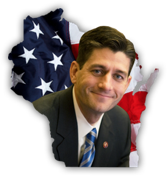

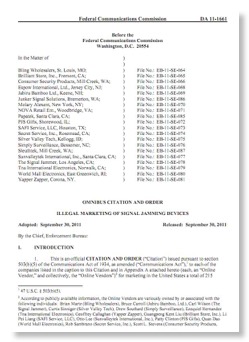


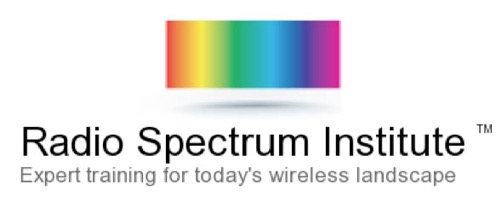


![Validate my RSS feed [Valid RSS]](valid-rss-rogers.png)

